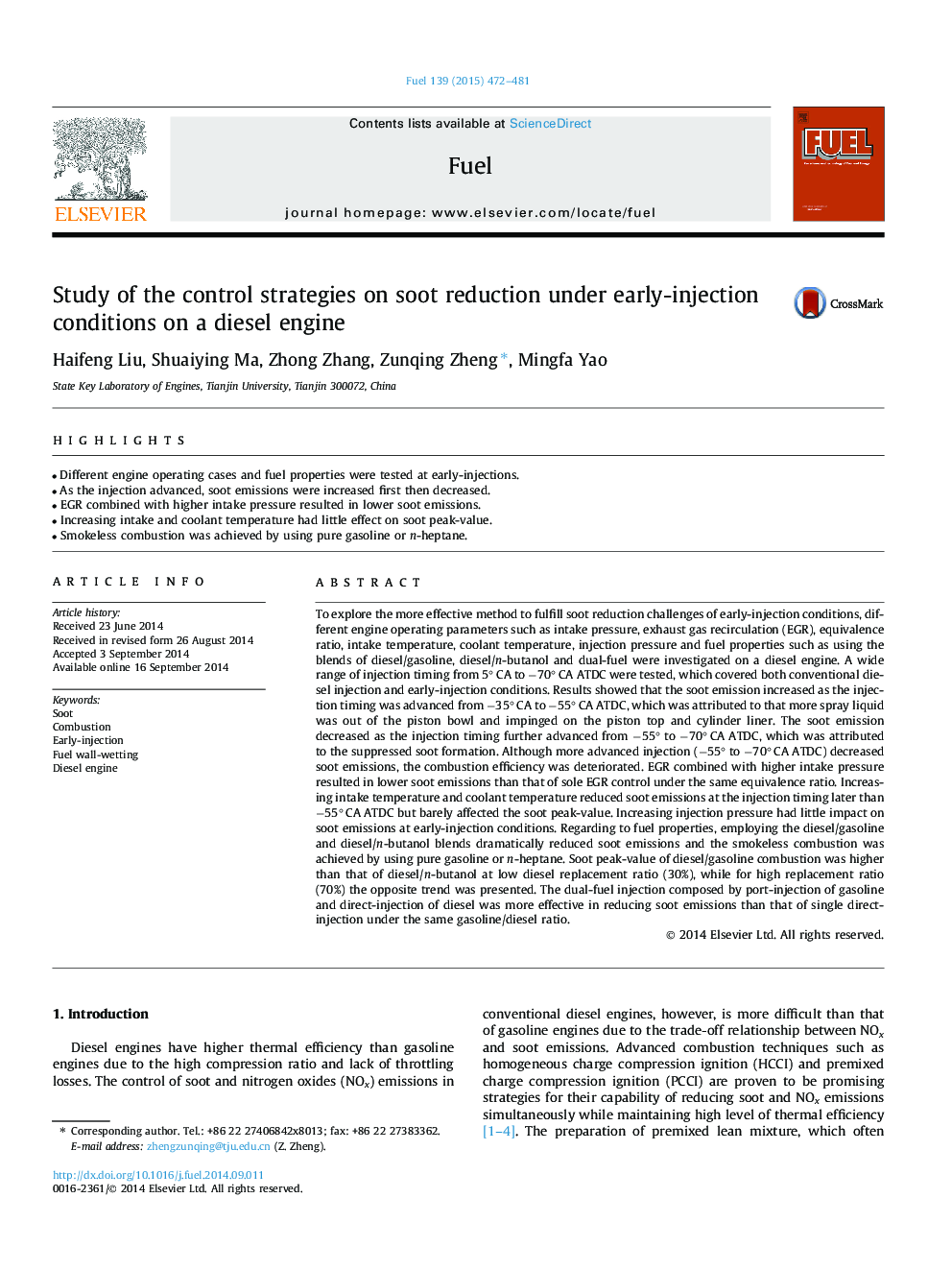| کد مقاله | کد نشریه | سال انتشار | مقاله انگلیسی | نسخه تمام متن |
|---|---|---|---|---|
| 6636546 | 461134 | 2015 | 10 صفحه PDF | دانلود رایگان |
عنوان انگلیسی مقاله ISI
Study of the control strategies on soot reduction under early-injection conditions on a diesel engine
ترجمه فارسی عنوان
بررسی استراتژی کنترل بر کاهش دوده در شرایط زودرسی در یک موتور دیزل
دانلود مقاله + سفارش ترجمه
دانلود مقاله ISI انگلیسی
رایگان برای ایرانیان
کلمات کلیدی
دود، احتراق تزریق اولیه مرطوب کردن دیوار سوخت، موتور دیزل،
موضوعات مرتبط
مهندسی و علوم پایه
مهندسی شیمی
مهندسی شیمی (عمومی)
چکیده انگلیسی
To explore the more effective method to fulfill soot reduction challenges of early-injection conditions, different engine operating parameters such as intake pressure, exhaust gas recirculation (EGR), equivalence ratio, intake temperature, coolant temperature, injection pressure and fuel properties such as using the blends of diesel/gasoline, diesel/n-butanol and dual-fuel were investigated on a diesel engine. A wide range of injection timing from 5° CA to â70° CA ATDC were tested, which covered both conventional diesel injection and early-injection conditions. Results showed that the soot emission increased as the injection timing was advanced from â35° CA to â55° CA ATDC, which was attributed to that more spray liquid was out of the piston bowl and impinged on the piston top and cylinder liner. The soot emission decreased as the injection timing further advanced from â55° to â70° CA ATDC, which was attributed to the suppressed soot formation. Although more advanced injection (â55° to â70° CA ATDC) decreased soot emissions, the combustion efficiency was deteriorated. EGR combined with higher intake pressure resulted in lower soot emissions than that of sole EGR control under the same equivalence ratio. Increasing intake temperature and coolant temperature reduced soot emissions at the injection timing later than â55° CA ATDC but barely affected the soot peak-value. Increasing injection pressure had little impact on soot emissions at early-injection conditions. Regarding to fuel properties, employing the diesel/gasoline and diesel/n-butanol blends dramatically reduced soot emissions and the smokeless combustion was achieved by using pure gasoline or n-heptane. Soot peak-value of diesel/gasoline combustion was higher than that of diesel/n-butanol at low diesel replacement ratio (30%), while for high replacement ratio (70%) the opposite trend was presented. The dual-fuel injection composed by port-injection of gasoline and direct-injection of diesel was more effective in reducing soot emissions than that of single direct-injection under the same gasoline/diesel ratio.
ناشر
Database: Elsevier - ScienceDirect (ساینس دایرکت)
Journal: Fuel - Volume 139, 1 January 2015, Pages 472-481
Journal: Fuel - Volume 139, 1 January 2015, Pages 472-481
نویسندگان
Haifeng Liu, Shuaiying Ma, Zhong Zhang, Zunqing Zheng, Mingfa Yao,
